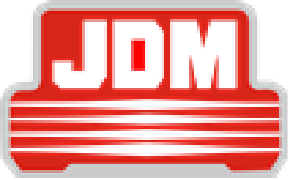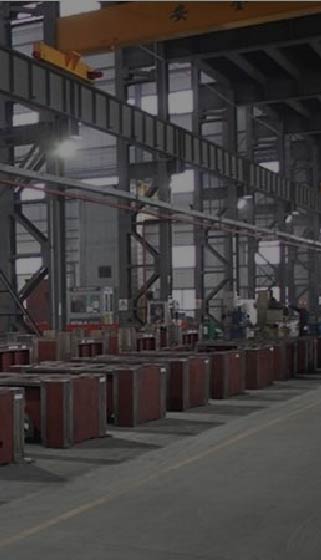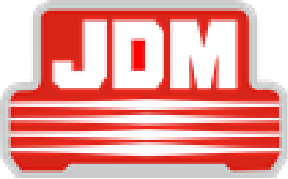







_1709721709_WNo_1000d560.webp)
Welcome to the comprehensive world of CNC Punch Press technology, an innovative realm that has revolutionized the manufacturing industry. In this article, we delve deep into the essentials, functionalities, and benefits of CNC Punch Presses, covering various types, key features, and real-world applications. Whether you're in aerospace, automotive, or any sector in between, understanding the capabilities and advantages of CNC Punch Presses is crucial for any modern manufacturer. Dive in as we explore how these sophisticated machines can enhance efficiency, precision, and productivity in your manufacturing processes.
Ever wondered how those perfect, intricate shapes in metal sheets are made? The hero behind the scenes is often a CNC (Computer Numerical Control) Punch Press. This piece of advanced machinery revolutionizes the way we work with metal, offering precision, efficiency, and versatility unlike anything before. A CNC Punch Press is not just any machine; it's a pivotal part of the manufacturing world, especially for those who demand perfection down to the last millimeter.
At its core, a CNC Punch Press is a machine that uses computer-controlled systems to manage a punching mechanism. This allows for incredibly precise shapes to be cut out or formed in a sheet of metal. What sets it apart from traditional punch presses is the CNC technology, enabling automated control over the punching operations. This means not only higher accuracy but also the ability to perform complex patterns and designs at a much faster rate than manual methods.
Whether you're in the market for creating ventilation systems, intricate metal parts, or decorative pieces, the CNC Punch Press can handle it all. Its versatility makes it a valuable asset in industries ranging from automotive to electronics, where precision metal fabrication is key. Not only does it increase productivity, but it also reduces waste and improves the overall quality of the final product.
If you're a business in the 2B sector, understanding and utilizing a CNC Punch Press could be a game-changer. The ability to swiftly create high-quality, detailed metal components can significantly boost your operational efficiency and product offerings. Plus, with advancements in CNC technology, these machines are becoming more accessible and user-friendly, making them an excellent investment for businesses looking to scale up their production capabilities.
You might have heard about CNC machines, but what exactly is a CNC Punch Press? Let’s dive into this modern marvel that has revolutionized the manufacturing industry. A CNC (Computer Numerical Control) Punch Press is an advanced machine used for cutting, forming, or punching holes in various materials, including metal sheets, with astonishing precision. Unlike traditional manual punch presses, this powerhouse leverages computerized technology to deliver designs that are nothing short of precise. Imagine it as a robotic arm that dances to the tune of digital instructions, transforming raw materials into intricate parts with a touch of elegance and efficiency. This game-changer is not just about making holes; it's about doing it with the kind of precision that manual processes can only dream of. It’s perfect for 2B users looking for unparalleled accuracy in their manufacturing processes. So, whether you're in the market for a Punch Press for sale or just keen to understand the capabilities of different types of Punch Presses, you’re in the right place!
Peeling back the layers of a CNC Punch Press reveals the core components that make it tick. At the heart of this technological marvel is the CNC controller, the brain that converts digital designs into commands for the machine. Think of it as the mastermind coordinating every punch with precision. Next, we have the turret, a revolving unit housing different tools for various tasks – it's like a Swiss Army knife for metal fabrication! Each station in the turret holds a unique punch and die combination, ready to shape your material to perfection. Then, there’s the worktable, where raw materials lay in wait, ready to be transformed. But it’s not just a simple surface; it's equipped with clamps to securely hold materials in place during the punching process. Lastly, don't forget about the frame – the skeletal structure that holds everything together, ensuring stability and support during operations. Understanding these components is crucial for anyone looking to invest in a Punch Press for sale or optimize their manufacturing workflow with different types of Punch Presses.
Navigating the world of CNC Punch Presses can feel like exploring a dense forest – there are so many paths and options! But fear not, for we are here to guide you through the three primary types of Punch Presses available: Mechanical, Hydraulic, and Servo-Electric. Each type brings its own set of benefits to the table, tailor-made for different manufacturing needs.
Mechanical Punch Presses: These are the traditional powerhouses, known for their speed and efficiency. They utilize a flywheel and a clutch to deliver force to the punch. Think of it as a cyclist pedaling downhill – the momentum builds up and then is directed into a powerful thrust. Mechanical punch presses are fantastic for high-speed operations and are often favored in mass production environments.
Hydraulic Punch Presses: If you’re looking for versatility and control, hydraulic punch presses might just be your best bet. They operate using hydraulic fluid to move the ram, much like how your car's brakes use fluid to transmit pressure. This type of press offers excellent control over the ram's force and speed, making it ideal for intricate tasks. Plus, they can handle a wide range of material thicknesses, making them a versatile choice for various applications.
Servo-Electric Punch Presses: Welcome to the world of energy efficiency and precision! Servo-electric punch presses use servo motors to control the ram, allowing for extremely precise movements. They're like the high-precision watches of the punch press world, delivering exact punches with minimal energy waste. These are particularly suitable for companies focusing on sustainability and cost-effectiveness, as they consume less power and require less maintenance compared to their mechanical and hydraulic counterparts.
Understanding these types of CNC Punch Presses helps in selecting the right one for your needs, whether you're on the hunt for a Punch Press for sale or aiming to enhance your facility's capabilities. Remember, the choice depends on your specific requirements like material type, thickness, speed, precision, and energy efficiency. Each type has its unique advantages, so consider your options wisely before diving into the vast sea of CNC machinery.
Every tool or machine has its own set of unique features and capabilities, and the CNC Punch Press is no exception. This marvel of modern manufacturing comes loaded with attributes that make it a standout in the metal fabrication industry. Let's delve into some of these key features and understand what makes this machine so indispensable.
When it comes to manufacturing, precision and accuracy are not just words; they are the benchmarks of quality. The CNC Punch Press shines brightly in this arena, offering unparalleled precision in metal fabrication. With the ability to follow complex designs down to the minutest detail, this machine can achieve tolerances that are near perfect. This level of accuracy ensures that every part produced is consistent with the last, reducing waste and increasing efficiency in production lines.
One of the most significant advantages of the CNC Punch Press is its versatility in working with different materials. From aluminum and steel to copper and brass, this machine can handle various types of metal sheets. The thickness and type of material that can be processed usually depend on the punch press's specific model and capabilities. This flexibility allows manufacturers to use one machine for a variety of projects, making it a cost-effective solution for businesses of all sizes.
Every machine has its limits, and the CNC Punch Press is no exception. The size and capacity of a punch press can vary widely from one model to another. Generally, these machines are categorized based on their maximum punching force (measured in tons) and the maximum sheet size they can accommodate. Understanding the size and capacity of the CNC Punch Press is crucial for manufacturers to ensure that they choose the right model to meet their production needs. Whether you are looking for a compact unit for small-scale operations or a larger machine for industrial use, there's a punch press out there that fits the bill.
In the bustling world of manufacturing, CNC Punch Presses stand out as pivotal players, seamlessly integrating with production lines to enhance efficiency and precision. These versatile machines transform sheets of metal into complex components, serving as the backbone of countless manufacturing processes. Their role cannot be overstated; they bridge the gap between design and product, turning theoretical designs into tangible assets with speed and precision.
The influence of CNC Punch Presses extends across various sectors, notably in aerospace and automotive industries. In aerospace, precision is not just a requirement; it's paramount, with every component playing a crucial role in the safety and functionality of the aircraft. Similarly, in the automotive industry, the precision and efficiency of CNC Punch Presses contribute to the production of high-quality parts that meet rigorous safety and performance standards. But the applications don't stop there; from electronics to construction, these machines adapt to meet the demands of diverse sectors, showcasing their unmatched versatility.
The innovative applications of CNC Punch Presses are as diverse as they are inspiring. Case studies reveal their use in creating intricate components for cutting-edge technology products, to shaping the metal frameworks used in large-scale construction projects. They are also instrumental in the healthcare sector, where precision is critical, demonstrating their versatility and capacity to contribute to advances across a broad spectrum of industries. These examples highlight the transformative impact of CNC Punch Presses, proving that they are more than just machines; they are integral to the evolution and success of modern manufacturing.
When it comes to efficiency and productivity, CNC Punch Presses are in a league of their own. A comparative analysis with traditional punching methods reveals a stark difference: CNC Punch Presses dramatically reduce the time it takes to transition from design to production. They eliminate manual setup processes, allowing for rapid, on-the-fly adjustments. This leads to a significant increase in throughput, enabling manufacturers to complete more orders in less time. The automation of repetitive tasks not only speeds up production but also reduces the likelihood of human error, further enhancing overall efficiency.
The quality and consistency offered by CNC Punch Presses are unrivaled. Automated punching ensures that every piece produced matches the original design specifications exactly, with minimal deviation. This consistency is crucial, especially in industries where precision is paramount. The automated process also means that the first piece and the thousandth piece will be virtually identical, maintaining quality regardless of volume. This high level of consistency helps in building trust with clients and maintaining a strong reputation for quality in the market.
The initial investment in a CNC Punch Press might seem substantial, but an evaluation of the financial impact reveals its true cost-effectiveness. By streamlining the production process and reducing waste, CNC Punch Presses can significantly lower production costs over time. The reduction in manual labor not only cuts down labor costs but also minimizes errors and reworks, further enhancing cost efficiency. Moreover, the ability to produce parts quickly and accurately means that manufacturers can respond faster to market demands, leading to better customer satisfaction and potentially more business opportunities.
The software is the unsung hero behind the functionality of CNC Punch Presses. Essential to programming these machines, it translates complex designs into precise punching instructions. This software allows for intricate detailing and customization, providing the user with the tools needed to craft detailed programs that guide the machine. It's not just about the creation of designs but also about optimizing the punching sequence, reducing tool changes, and maximizing material utilization. The right software can make the difference between good and exceptional performance of a CNC Punch Press.
Before a single punch is made, the software enables the design and simulation of the entire punching process. This crucial step ensures precision by allowing operators to foresee and correct potential problems before they occur. It’s like rehearsing a play before opening night, ensuring every move is choreographed perfectly. This not only saves time and materials but also ensures the end product meets the exact specifications, eliminating costly errors and ensuring the production process is as efficient as possible.
Data management and integration are key features of modern CNC software, enabling seamless operations and connectivity. This involves the organization and storage of design files, tool configurations, and material specifications, making them easily accessible when needed. Furthermore, the integration with other systems allows for a streamlined workflow, from design to production, ensuring that every step of the process is interconnected and optimized for efficiency and productivity. This holistic approach to data management and integration is what propels CNC Punch Presses ahead in the manufacturing sector, enabling them to meet the demands of modern production environments.
Selecting the right CNC Punch Press is crucial for maximizing productivity and efficiency in your manufacturing operations. However, with so many options available, making the right choice can seem daunting. Here’s a comprehensive guide to help you navigate through the selection process, ensuring you find a machine that perfectly aligns with your business needs.
Assess Your Requirements: Start by evaluating the specific needs of your projects. Consider the type of materials you will be working with, the thickness of these materials, and the complexity of the designs. Understanding your requirements in detail will help you determine the type of punch press (mechanical, hydraulic, or servo-electric) best suited for your operations.
Consider Machine Capacity: Look at the size and capacity of the different CNC Punch Presses. Ensure the machine you choose can handle the maximum sheet size and thickness you intend to use. Also, consider the tooling capacity, as having more stations can increase versatility and reduce setup times.
Evaluate Software Compatibility: The software behind the CNC Punch Press is just as important as the hardware. Check the compatibility and features of the machine’s software. Ensure it is user-friendly and offers the design and simulation capabilities you need for your projects.
Examine the Precision and Accuracy: Evaluate the precision and accuracy levels of different CNC Punch Presses. These factors are vital for maintaining the quality of your products, especially if you are working with detailed designs or in industries where precision is critical.
Look into After-Sales Support: Good after-sales support is crucial for the longevity and efficiency of your CNC Punch Press. Ensure the manufacturer provides comprehensive training, maintenance, and support services.
Cost Considerations: While the initial cost is an important factor, also consider the long-term operating costs. A more expensive machine might offer better efficiency, lower maintenance costs, and higher productivity, which can lead to cost savings over time.
By carefully considering these factors, you can choose the right CNC Punch Press that not only meets your current needs but also adapts to future growth and changes in demand. Remember, the right investment will yield significant returns in terms of productivity, quality, and efficiency.
In conclusion, CNC Punch Press technology represents a cornerstone in the future of manufacturing, providing unmatched precision, efficiency, and versatility. As a leading CNC Punch Press manufacturer, JDM stands at the forefront of innovation and quality. Explore our comprehensive range of solutions and discover how we can elevate your manufacturing capabilities to new heights. Visit our global website at https://www.jdmpresses.com/ to learn more and take the first step towards optimizing your production today.
A CNC punch press can handle a wide range of materials, including aluminum, stainless steel, copper, brass, and various plastic sheets. The specific types of materials and thicknesses that can be processed depend on the machine's capacity and the type of punch press (mechanical, hydraulic, or servo-electric).
A CNC punch press differs from other metal fabrication tools in its ability to produce a wide range of shapes and designs with high precision and speed. Unlike manual tools or simpler machines, it uses computerized technology to ensure accuracy and consistency. Additionally, CNC punch presses are capable of performing complex operations such as forming, embossing, and threading, which are not possible with basic cutting tools.
The main safety concerns when operating a CNC punch press include the risk of hand and finger injuries from the machine's moving parts, the possibility of materials being ejected at high speeds, and the potential for hearing damage due to noise levels. To mitigate these risks, operators should use protective equipment, adhere to safety protocols, and undergo proper training.
Yes, a CNC punch press can be used for small-scale production. It is suitable for businesses that require high-quality, precise components but do not have the volume requirements that justify mass production. The flexibility and efficiency of CNC punch presses make them ideal for short runs and prototype development.
Choosing the right CNC punch press for your business involves considering several factors, including the types of materials you will be processing, the thickness of those materials, the complexity of the parts you will be producing, your production volume, and your budget. Additionally, evaluate the machine's software, support, and maintenance services provided by the manufacturer. Assess your current and future needs to ensure the machine will support your business's growth and adapt to changing demands.






